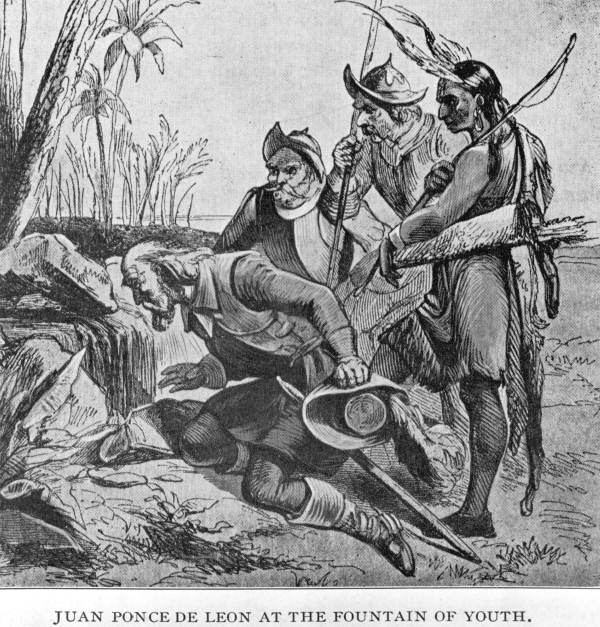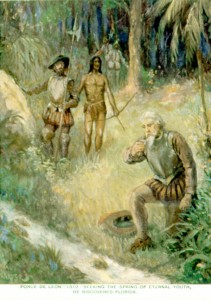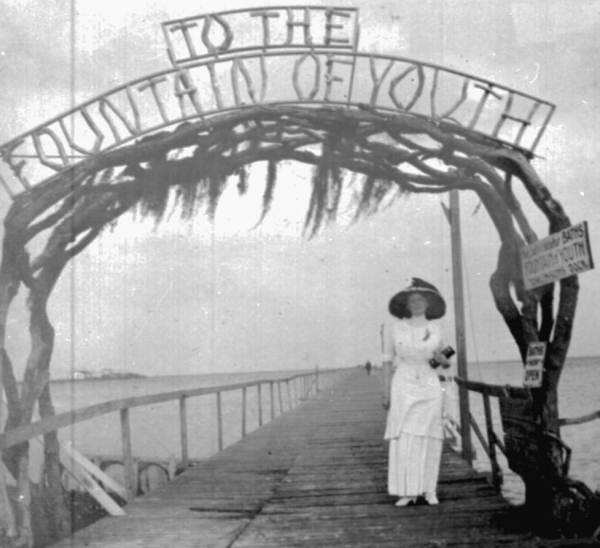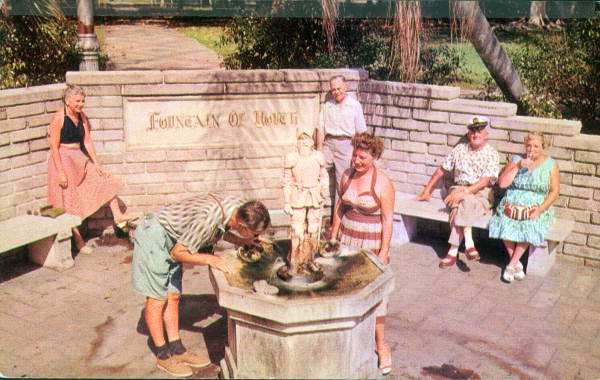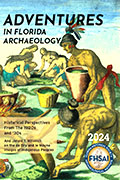BY LESA.LORUSSO ON JULY 13, 2012 IN FLORIDA HISTORICAL SOCIETY
The Legend of the Fountain of Youth, or Florida’s First Tall Tale, By Lesa N. Lorusso
In April 2013 Florida will celebrate her 500-year anniversary of Ponce de León’s landing on Floridian soil. Publications across the state are beginning to publish articles that chronicle half a century of Spanish heritage including the Forum, the fascinating magazine for the Florida Humanities Council whose recent publication is titled ¡Viva Florida! Marking 500 Years of Spanish Heritage. Florida, originally named “La Florida” by Juan Ponce de León in 1513 in honor of the season Pasqua florida or Easter of the flowers in Spanish, has a rich history of explorers, conquistadores, missionaries, pirates and scoundrels that predates the earliest recordings of any pilgrim in Virginia or Massachusetts. In fact, 56 years before English Pilgrims sat down to enjoy a meal of thanksgiving with indigenous people of the New World, Admiral Pedro Menendez and settlers in St. Augustine, FL had already broken bread with native Floridian tribes (1). For me, one of the most exciting aspects of history is that it is always changing. Heroes can become scallywags and vice versa as historians don their metaphysical fedoras and unearth new truths with the excitement of discovery akin to Spielberg’s swashbuckling archaeologist Indiana Jones.
One of the most scintillating shards of historical fact that historian J. Michael Francis, professor and chair of the Department of History at the University of North Florida, recently dusted off in his article for the Forum titled “Who Started the Myth About a Fountain of Youth?” is that Ponce de León was never actually searching for a Fountain of Youth at all. That’s right folks, this popular story is the stuff of legend and, despite what our third grade teachers may have told us years ago, isn’t likely to be true. Although cultures worldwide from Europe, the Middle East and Asia have proliferated a shared tale throughout history of magical waters with powers to rejuvenate youth, there is no historical evidence that Ponce de León knew about such a spring in Florida (2). According to Francis, it wasn’t until 1535, more than 20 years after Ponce’s 1513 voyage to Florida and more than ten years after his death in 1521 that any historian even associated him with a quest for the Fountain of Youth; and it is likely that it was written more as a character assassination to illustrate the Spanish explorer’s vanity and gullibility than to serve as an infallible historical record (2). Since the initial publication linking de León to the magical spring, however, writers throughout the ages have repeated, distorted and exaggerated the popular tale until it eventually grew legs and walked right into textbooks as historical fact. Although a search for a mythical spring of life in Florida makes for good editorial sales, the true reasons for de León’s travels in 1513 were far more human in nature. De León was forced to surrender the governorship of Puerto Rico in 1511 and set out on his expedition looking for fame and fortune to remedy the stinging effects of a bruised ego. He set sail for the Bimini islands, which he believed to be his ticket to financial Easy Street, when he happened upon the Floridian peninsula.
It is evident that the initial draw that Floridian cities like Miami, Orlando and Key West has on vacationers and investors is still strong. As in the case of Henry Flagler, the American railroad tycoon who made his mark in Florida in the 1800’s when he built several exquisite hotels in St. Augustine to capitalize on the wealthy patrons traveling to Florida to enjoy sunshine in the winter months, Florida steadily maintains its destination reputation. The present-day potential for tourism dollars continues to fuel design projects across the state making Florida a focal point for Architecture and Interior Design. Tourism in Florida provides a major economic impact and is the number one industry in the State with a record number of visitors (84.5 million). The industry directly employs approximately one million people and contributes about US $65 billion in tourism/recreation taxable sales (4).
Myth or fact, the Fountain of Youth story has become such an integral ingredient in Florida’s cultural heritage that it is not likely to go anywhere anytime soon. Our state’s modern tourism economy owes many thanks to the tale, which has perpetuated our state’s reputation as a destination of youthful rejuvenation. Sites throughout Florida including De Leon Springs State Park, St. Petersburg and St. Augustine continue to profit from the tale and lure visitors with Fountains of Youth. As Beth Dunlop, Architecture Critic for the Miami Herald, author and Editor in Chief for Miami Home Magazine, astutely observes: “Ever since Ponce de Leon stopped by in his ship, Florida has always been a place for fiction and fantasy, such as his search for the Fountain of Youth. For some reason, the landscape of Florida provokes more romantic schemes and dreams. It’s the blue of the sky, the power of sunshine, the way the landscape is silhouetted. It’s a place people go to reinvent themselves (3).”
Sources:
- O’Reilley , Barbara. “A City of Firsts.“ Forum Vol XXXV, No. 3, Fall 2011: pg 10. The Florida Humanities Council.
- Francis , J. Michael. “Who Started the Myth About a Fountain of Youth?” Forum Vol XXXV, No. 3, Fall 2011: pg 10. The Florida Humanities Council.
- Lorusso, Lesa. “The History of Professional Interior Design Licensure in Florida.” LNL Designs Interiors Blog. Posted March 19, 2012, Accessed June 13, 2012.
- Eric Friedheim Tourism Institute, University of Florida College of Health and Human Performance. 2010. 2012.


